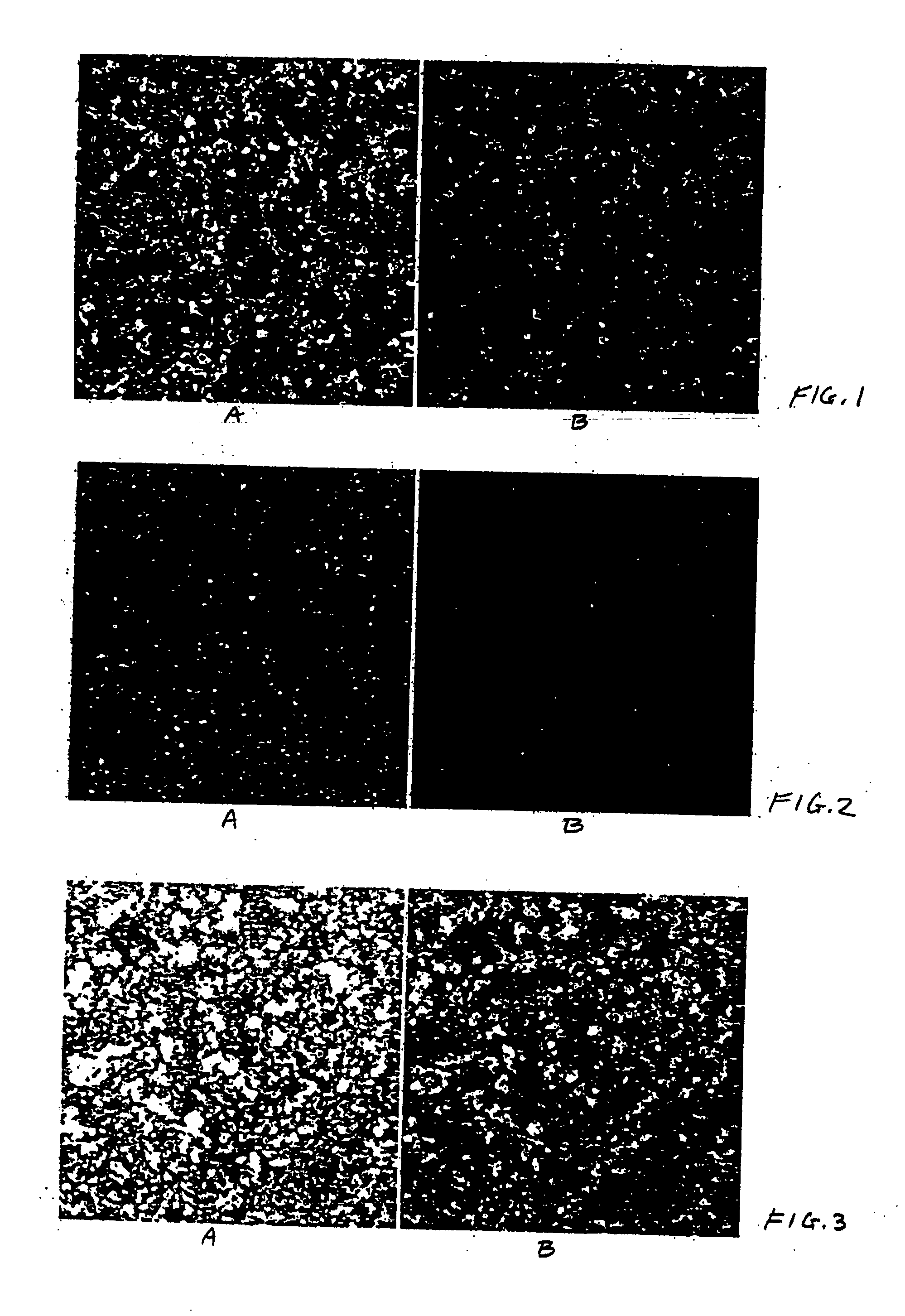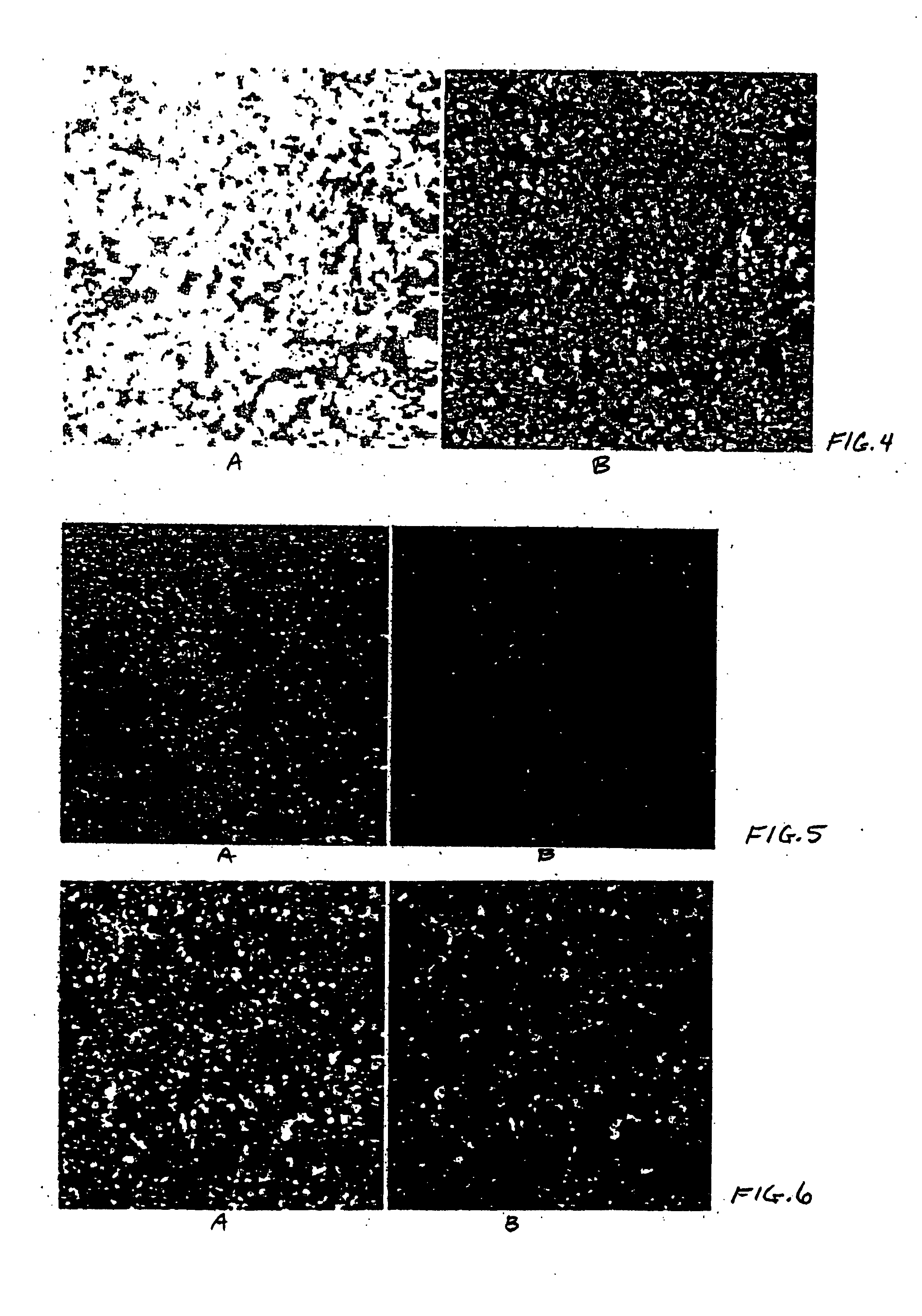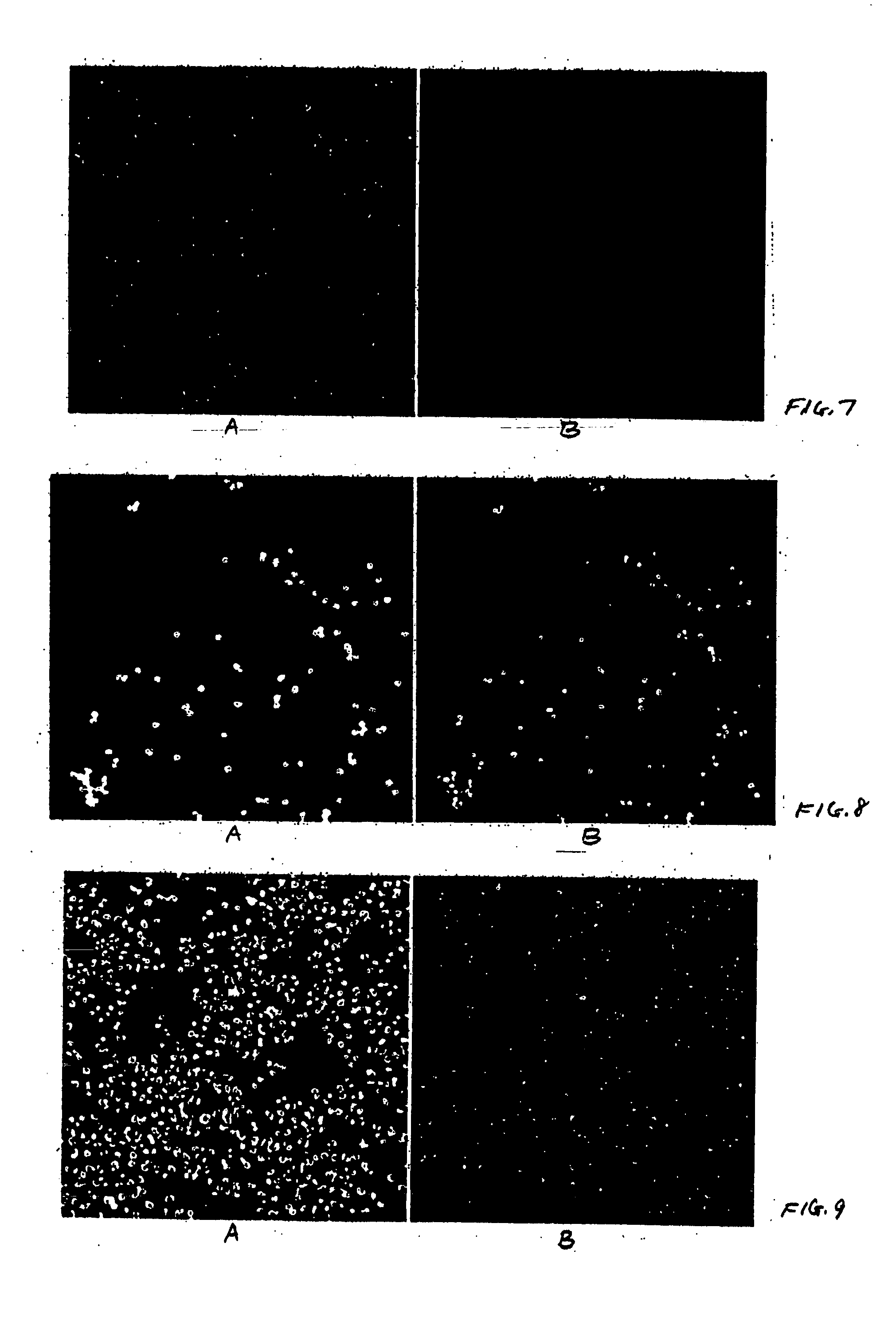Methods, compositions, and kits for analysis of enzyme activity in cells
a technology of enzyme activity and kit, which is applied in the field of methods, compositions, and kits for analysis of enzyme activity in cells, can solve the problems of inability to accurately reflect the activity of enzymes, disruption and death of cells, and the destruction of cells that are typically used to extract or purify enzymes, etc., to achieve the effect of facilitating intracellular delivery of substrates and greater yield
- Summary
- Abstract
- Description
- Claims
- Application Information
AI Technical Summary
Benefits of technology
Problems solved by technology
Method used
Image
Examples
example 1
7.1 Example 1
Preparation of 100 nm Cationic Liposomes
[0092] Large unilamellar vesicles (LUV) of diameter 100 nm were prepared by the extrusion method essentially as described by Chatterjee, et al. (in Methods in Molecular Biology: Liposome Methods and Protocols (S. Basu and M. Basu eds.), Humana Press, 2002, vol. 199, chapter 1). Sterile techniques were used throughout this procedure to prevent bacterial contamination of the liposomes. 1,2-Dioleoyl-sn-Glycero-3-Phosphocholine (DOPC) (12.5 mg, Avanti Polar Lipids, catalog no. 850375), and 1,2-Dioleoyl-sn-Glycero-3-Ethylphosphocholine (EDOPC) (12.5 mg, Avanti Polar Lipids, catalog no. 890704) were dissolved in chloroform (5 ml) in a 25 ml recovery flask. The solvent was thoroughly evaporated under high vacuum to leave a thin film. Sterile filtered PBS buffer (2 ml, pH 7.2) was added and the suspension was subjected to five cycles of freezing (−78° C., dry ice acetone bath) under argon and thawing (40° C.) to hydrate the lipids. The r...
example 2
7.2 Example 2
Preparation of 100 nm Cationic Liposomes Containing DDAO-gal or DDAO
[0093] DOPC and EDOPC were dissolved in chloroform and the solvent was evaporated to leave a thin film, as described in Example 1. 9H-(1,3-dichloro-9,9-dimethylacridin-2-one-7-yl) β-D-galactopyranoside (DDAO-gal) (5 mg, Molecular Probes, catalog no. D-6488) or 7-hydroxy-9H-(1,3-dichloro-9,9-dimethylacridin-2-one) (DDAO) (5 mg, Molecular Probes, catalog no. H-6482) was dissolved in DMSO (20 μl) and added to sterile filtered PBS buffer (2 ml, pH 7.2). The DDAO-gal or DDAO in PBS was added to the lipids and the suspension was subjected to five cycles of freezing (−78° C., dry ice acetone bath) under argon and thawing (40° C.) to hydrate the lipids. The resulting LMV were extruded and purified as described in Example 1. The concentration of DDAO-gal or DDAO within the liposomes was estimated to be 0.25 mg / ml.
example 3
7.3 Example 3
Cell Staining with Liposomes Containing DDAO-gal
[0094] Psi 2 BAGα cells (ATCC, catalog no. CRL-9560) in Dulbecco's modified Eagle's medium (ATCC, catalog no. 30-2002) containing 5% Fetal Bovine Serum (FBS, HyClone, catalog no. SH30071.03) and 1% penicillin-streptomycin solution (pen / strep, ATCC, catalog no. 30-2300) were seeded (200 μl / well, 10,000 cell / well) in black 96 well microtiter plates (ABI, catalog no. 4308776). HeLa cells (ATCC, catalog no. CCL-2) in Eagle's minimum essential medium (ATCC, catalog no. 30-2003) containing 5% FBS and 1% pen / strep were seeded (200 μl / well, 10,000 cell / well) in black 96 well microtiter plates (ABI, catalog no. 4308776). CHO cells (ATCC, catalog no. CCL-61) in F-12K medium (ATCC, catalog no. 30-2004) containing 5% FBS and 1% pen / strep were seeded (200 μl / well, 10,000 cell / well) in black 96 well microtiter plates (ABI, catalog no. 4308776). After overnight incubation at 37° C. under 5% CO2 the supernatants were removed carefully so...
PUM
| Property | Measurement | Unit |
|---|---|---|
| diameter | aaaaa | aaaaa |
| temperature | aaaaa | aaaaa |
| wavelength | aaaaa | aaaaa |
Abstract
Description
Claims
Application Information
 Login to View More
Login to View More - R&D
- Intellectual Property
- Life Sciences
- Materials
- Tech Scout
- Unparalleled Data Quality
- Higher Quality Content
- 60% Fewer Hallucinations
Browse by: Latest US Patents, China's latest patents, Technical Efficacy Thesaurus, Application Domain, Technology Topic, Popular Technical Reports.
© 2025 PatSnap. All rights reserved.Legal|Privacy policy|Modern Slavery Act Transparency Statement|Sitemap|About US| Contact US: help@patsnap.com



